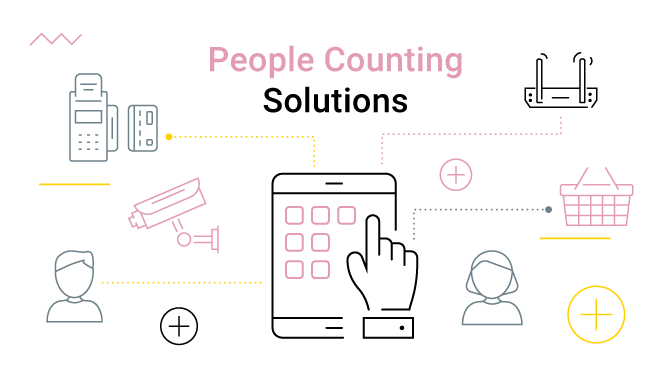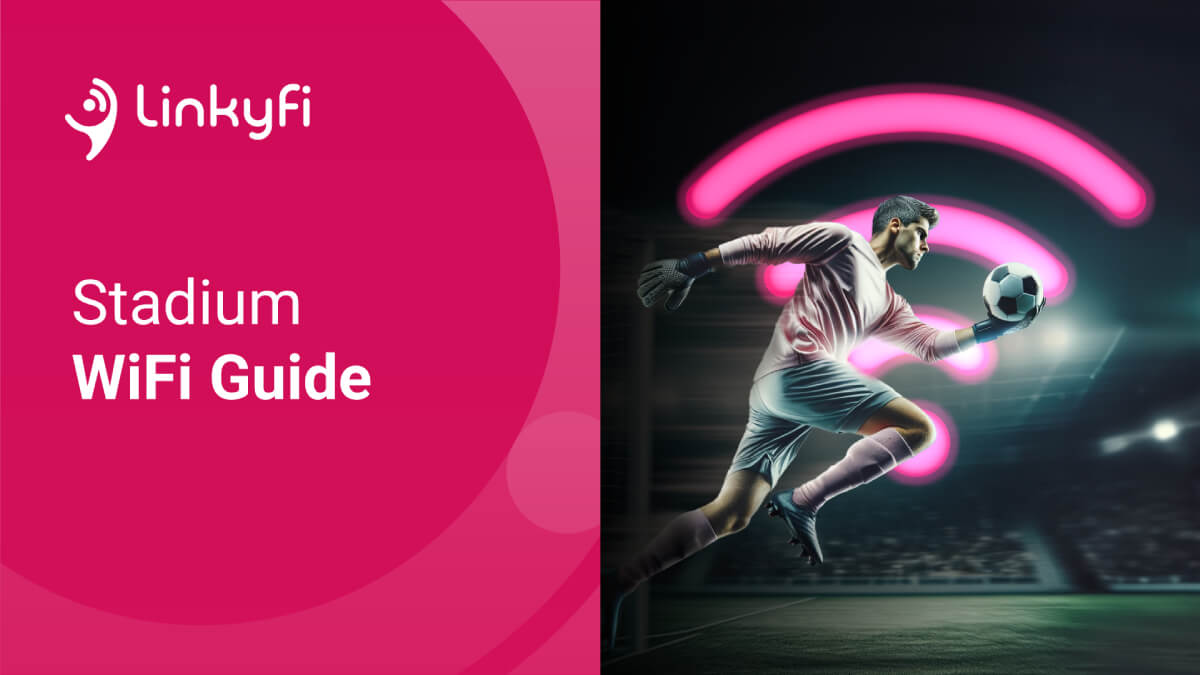People counting software – how and why should you count retail store traffic

When we talk about retail traffic counting, what we mean is measuring footfall using dedicated tools in order to assess the number of customers on the shop floor. But why would you have to do that? Do you really need to know how many people there are in the store at a particular moment? Well, having this knowledge is a benefit in and of itself, but as it turns out, there is much more to people counting than that. If used correctly, proper software can give you a competitive edge you won’t be able to find anywhere else.
How can stores measure traffic?
There are a variety of options when it comes to retail traffic counting and the best choice, as always, depends on a number of factors and on your particular needs. Below, we break down the most popular solutions and types of people counting tools, discussing their advantages and disadvantages.

One such solution that is readily available for you as a store owner is using a Point of Sale (POS) system to get a rough idea about your customer numbers. A POS system provides you with an abundance of crucial data about your retail, so it is possible to extract the number of transactions and use it as a ballpark figure for the daily number of visitors. While this does give you a basic overview of your checkout line occupancy, you must admit it doesn’t say much about the real footfall in your store, as it doesn’t account for shopping families (where no single person makes all the decisions) or customers who left without buying anything. So, unless you are fine with only having the essentials on your retail traffic, you best use the POS system for what it was made for – to get information about your stock rather than people.

A very popular people counting solution is a dedicated hardware that uses technologies such as infrared, thermal, or video monitoring to measure the traffic in your store. It can be often found in entrance and exit gates, giving you a very exact number of visitors that are coming and leaving. It is also possible to install cameras or sensors at other points where measuring your traffic will bring you the most benefits – that can be the checkout line, the action alley, or any other key location in your store that attracts customers. While it is very exact, this hardware has a limited reach, so you need to either prepare yourself for a costly installation of multiple devices or come to terms with only collecting partial data in places where you decide to put your sensors.

Not all is lost if you aren’t ready to dish out the money for a new single-purpose hardware deployment in dozens, hundreds or thousands of stores. You can instead use your existing infrastructure to collect extensive knowledge about customers. The key to that lies… in your WiFi. WiFi analytics software collects data about devices – smartphones, tablets etc. – that probe for access to your network (regardless of whether they eventually connect to the WiFi or not). While this method does not give you 100% accurate data, it is pretty much on the spot and has a farther reach than people counting hardware with less effort, as normally, when you deploy WiFi at your location, you strive for it to be accessible everywhere. In return, it can provide extra information on how frequently customers visit your store, how long they stay, and it can even trace unique devices as they move around. An additional advantage of this solution is that when visitors connect to your WiFi, with their consent, you can collect more personalized data, such as their age, gender, contact information, and even ask for feedback. Thus, the software can not only measure overall store occupancy or popularity of certain locations, it can trace customer journey, dwell time, personal information and much more, providing you with not only simple numbers but invaluable business and marketing insights.

Why is it important to measure traffic in stores?
Now that you know how to count retail traffic, you might be asking yourself why would you need to do that? The answer is simple: optimization. Collecting exhaustive data about your customers and their behavior will help you make smarter business decisions that measurably affect store operations and, if used right, also your marketing strategy. So what can you achieve with people counting software?
Optimize traffic
Obviously, the most basic thing you can improve is your store traffic. By collecting evidence about how many people visit your store and at what times, you will be prepared for rush hours and ready to facilitate queue management to improve your customer service.
However, recent worldwide events have proven that not just queue management, but occupancy management in general is going to be vital for retail operations for the foreseeable future. People counting in public spaces has become one of the easiest ways to maintain physical distance and keep everyone safer. You can go a step further, though, and move beyond just counting how many visitors there are in the store. Comprehensive monitoring of your shop floor and customer behaviors can help you devise better and more secure congestion plans that are focused on avoiding bottlenecks and close contact between people.

Adjust space and display
What is more, if you track and analyze the customer journey and the hotspots on the shop floor, you can use this information to build better planograms – ones that will be clear and intuitive for the shoppers but also profitable for you. This will undoubtedly save visitors a lot of frustration and aimless wandering, effectively improving their satisfaction. And it is a well-known truth that good planograms drive better sales, so everybody wins.
Make comparisons
If you are uncertain that this will actually work and that you can make strategic decisions about space and display based on the insights you obtain, there is an easy way to test it – just compare the results in different stores and see what works best. Benchmarking stores based on data such as traffic, length of stay and return rate tells you where you need to change strategy. Furthermore, analyzing the number of visitors and their movements gives you evidence as to what best-performing stores do that makes them so great, so you don’t have to scratch your head at the mystery of your own success.

Manage people and resources better
We’ve already mentioned improved queue management as one of the benefits of retail traffic counting. Certainly, the information can help your customer service teams plan cashier shifts better. You can also consider adding more shop floor assistants at peak hours to enhance customer experience not only at the checkout.
But it is no trade secret that your customer base differs depending on the time of day and so do product groups with the biggest sales (think about the elderly vs. 9-to-5 office workers and their shopping habits). Bakery products will probably be selling better than alcohol in the morning, but is it also true for the evening? By looking at the hotspots around your store at different hours you can plan replenishment shifts better and focus on ensuring the key product groups are restocked first.
This can also help you optimize cleaning services. You may find that it makes no sense to clean certain locations several times a day when they only experience sales at specific hours. It’s better then to limit the tasks there in favor of increasing the frequency of cleaning activities in areas that drive constant footfall (such as produce and bakery departments or the action alley).

Improve your marketing strategy
Finally,if you collect the right data, it can help you deliver more focused and targeted promotional activities that are bound to be more effective. First of all, knowing how shoppers move around the store gives you the information on where to put promotional stands, “hot” stock etc. Knowing when your customers like to shop – not only throughout the day, but also week-on-week or year-to-year – gives you a strong clue as to how to best plan promotions and seasonal loyalty campaigns.
Additionally, if you decide on a multipurpose people counting software, you can take your marketing straight from offline to online. Since WiFi-based software collects not just raw numbers, but also customer data, it frequently also offers a complementary WiFi marketing solution, which you can use to run targeted email campaigns alongside a host of other advertising features.
Do you really need people counting tools?
To that we say resoundingly: yes! With all the data about stock and sales bunched neatly into a set of KPIs that retailers have at their disposal, it may seem like more than enough information to make pragmatic decisions about the business. But this data only gives you a last-stage information about the customer journey: the purchase. What it doesn’t tell you is what happens before: how many visitors enter, how many leave without buying, where they go, how long they stay, or how frequently they come back. And as you can see, this gives you a simply invaluable hand in running not only your marketing strategy, but also space and display activities, as well as store operations.
Recommended posts
- WiFi for Stadiums Explained
- Guest WiFi - Easter Marketing with AI: A Step-by-Step Guide
- Guest WiFi + AI: Your Marketing Dream Team!
Subscribe to stay in the loop with all our latest content:
Recommended posts





